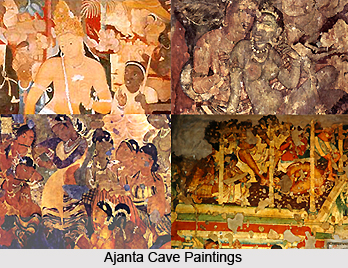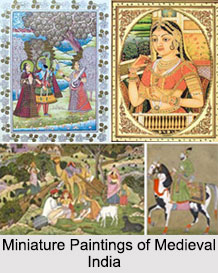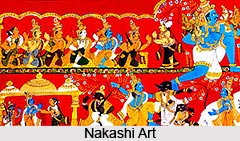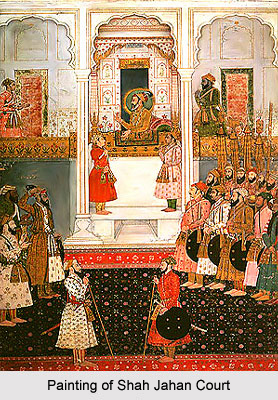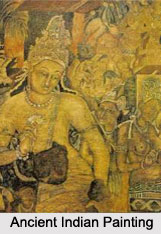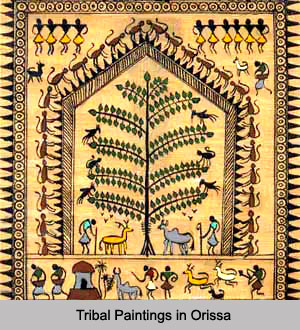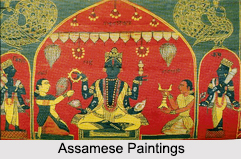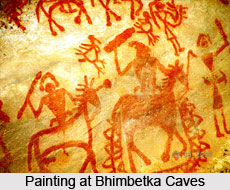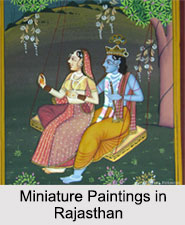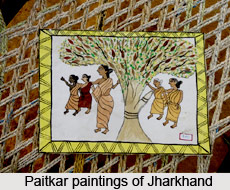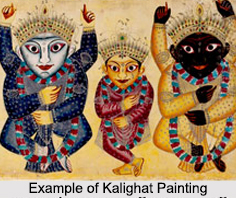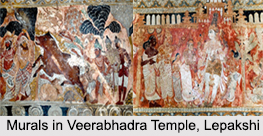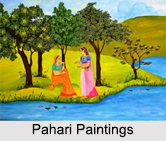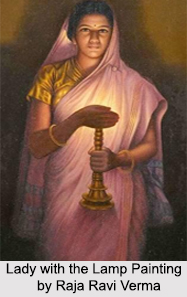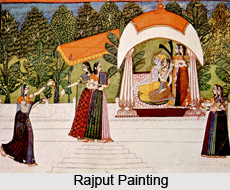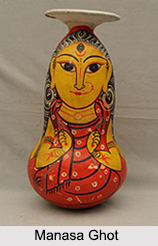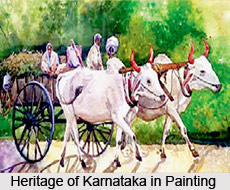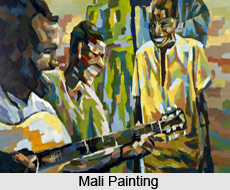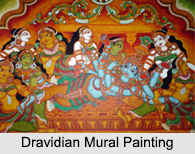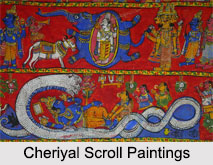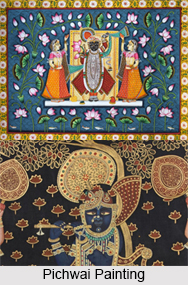 Pichwai Paintings are a style of folk painting that originated in the town of Nathdwara near Udaipur in Rajasthan. These paintings are made on cloth which depicts tales from Lord Krishna"s life. The word “Pichwai†literally refers to “hanging cloth at the backâ€. These are lyrical artworks done on cloths which hang at the back of the idol of Shrinathji, primarily in the sanctum sanctorum at Nathdwara. It is also found in other Krishna temples. These paintings are characterized by refined and detailed structures. Pichwai paintings are an important part of the cultural legacy of Rajasthan and enrich the cultural heritage of the country greatly.
Pichwai Paintings are a style of folk painting that originated in the town of Nathdwara near Udaipur in Rajasthan. These paintings are made on cloth which depicts tales from Lord Krishna"s life. The word “Pichwai†literally refers to “hanging cloth at the backâ€. These are lyrical artworks done on cloths which hang at the back of the idol of Shrinathji, primarily in the sanctum sanctorum at Nathdwara. It is also found in other Krishna temples. These paintings are characterized by refined and detailed structures. Pichwai paintings are an important part of the cultural legacy of Rajasthan and enrich the cultural heritage of the country greatly.
Origin of Pichwai Paintings
The origin of Pichwai Paintings dates back to over 400 years ago, the time when the sect Vallabhaichari created 24 iconographic for the backdrop of Lord Krishna"s image at Nathdwara. Pichwai Paintings have originated from the Nathdwara School of Paintings.
Themes of Pichwai Paintings
Each image of the painting had associations with a specific festival or celebration. Festivals and celebrations such as Sharad Purnima, Raas Leela, Annakoot or Govardhan Puja, Janmashtami, Gopashtami, Nand Mahotsav, Diwali and Holi are frequently depicted in Pichwai paintings.
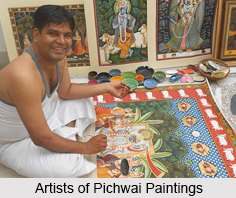 The prime features of this painting are heavy body, wide nose and big eyes. Other prominent features of Pichwai paintings are sun, star, moon and lighting. These painting form some of the most captivating arts depicting pageant of Lord Krishna"s life. Many of them exhibit pure poetry through paintings. Moments of philosophy from Lord Krishna"s tales such as "Vishvaroopam" are also portrayed in these paintings.
The prime features of this painting are heavy body, wide nose and big eyes. Other prominent features of Pichwai paintings are sun, star, moon and lighting. These painting form some of the most captivating arts depicting pageant of Lord Krishna"s life. Many of them exhibit pure poetry through paintings. Moments of philosophy from Lord Krishna"s tales such as "Vishvaroopam" are also portrayed in these paintings.
Technique of Pichwai Paintings
Various techniques are employed in this art form including applique weaving, embroideries, hand block paintings and printings. These are usually done on a rough hand spun cloth with dark rich colours. Flamboyant embroidery is a common feature of this art however dark coloured silhouettes can also be witnessed. The golden embroideries render a charming look to the art. To highlight the outlines white colour is used.
Firstly a rough sketch is made on a rough starched cloth which is then followed by filling the sketch with vibrant colours. The cloth of Pichwai paintings was initially dipped in colours made of vegetables and minerals. Different colours used initially in these paintings are lapis, cochineal, orpiment and indigo. As the paintings evolved with time, the shades of colours also undergone changes and attained contemporary touch. Presently, fabric colours have also popularized in Pichwai paintings.
Pichwai paintings take a long time to complete, ranging from a few weeks to months. Not only is the textile held sacred, but the process of creating it is a form of devotion for the Nathdwara chitrakars.
Artists of Pichwai Paintings
Some of the famed artists of Pichwai paintings are Ghasi Ram Sharma, Gopilal Sharma, Narottam Narayan Sharma, Kanhaiyalal Sharma, B. G. Sharma, Reva Shankar Sharma, Dwarkalal Sharma, Bitthaldas Sharma, Bhuralal Sharma, Raghunandan Sharma, Rajaram Sharma, Ghanshyam Sharma and Nitin-Nilesh Sharma.
